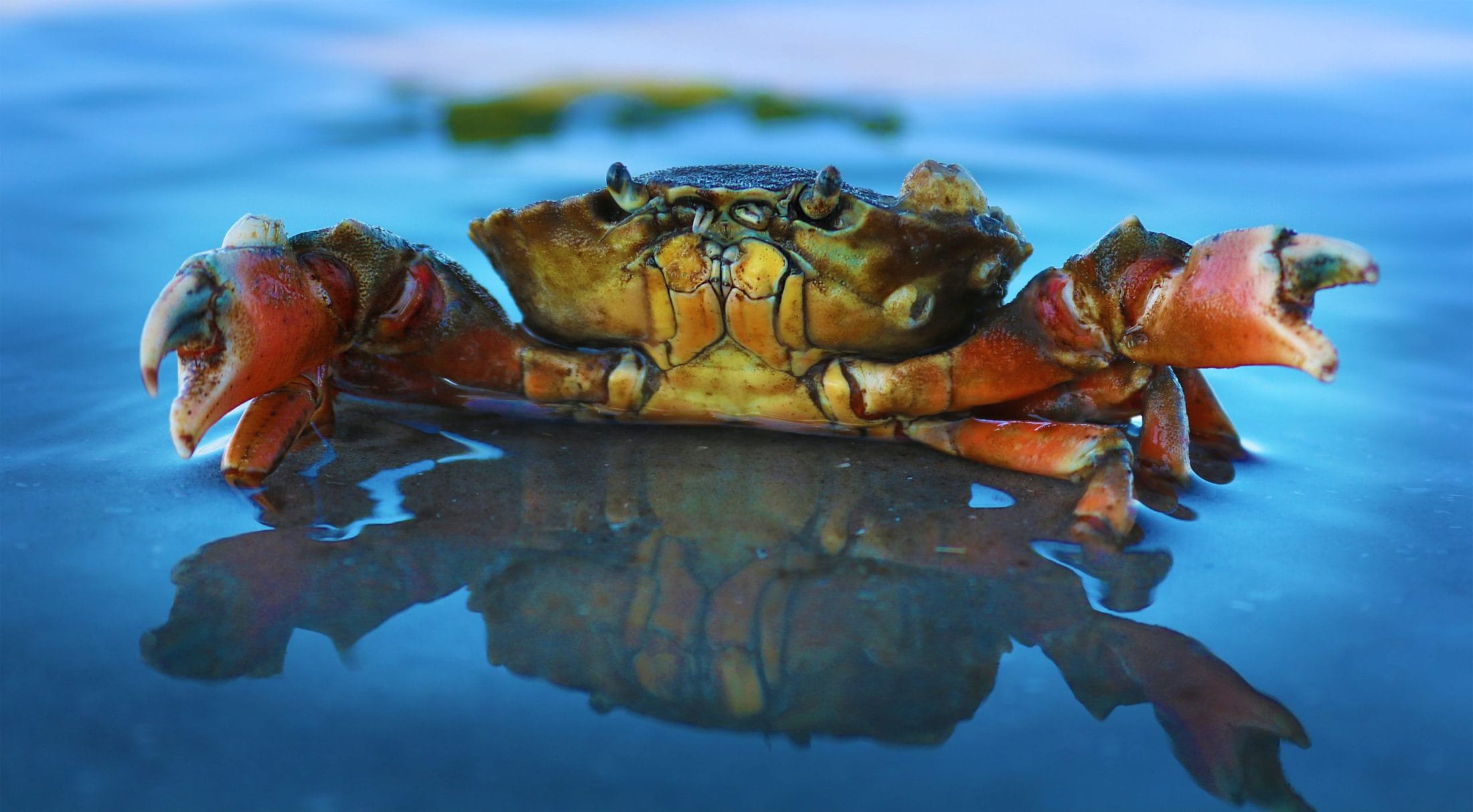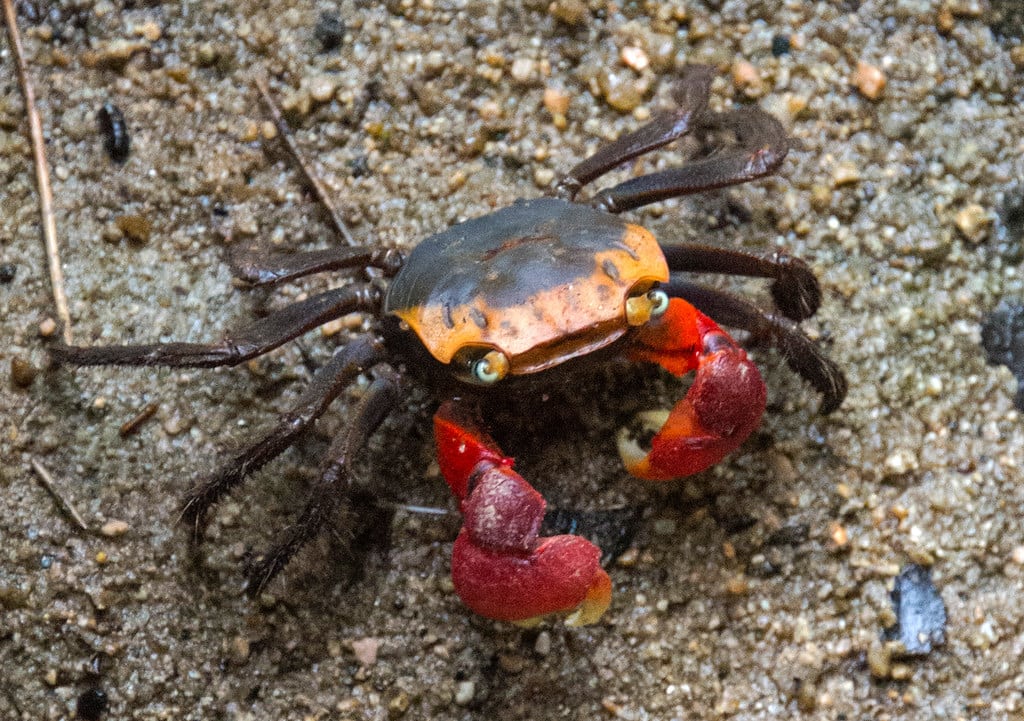Aquarium enthusiasts are always keen to add ornamental creatures in their tank to enhance the uniqueness of it. Geosesarma dennerle, also known as the Vampire crab, is the new favorite of aquarium lovers due to their exceptional appearance and easy caring regimes. These spooky-looking creatures have paved a way inside the aquarium market very easily.
Origin:
Vampire crabs were first seen in the year 2006. These enormously colorful land-dwelling Crustaceans have been gaining popularity exponentially since then. Under the ornamental fish trading category, this fish is sold across Europe, America, and Asia.
These crabs can be majorly found in Southeast Asia, where freshwater is in abundance. Crabs dealers state the possibility of these crabs originating from Java To Krakatoa, Sulawesi, Borneo, and even New Guinea.
The newer species of the Geosesarma genus can be located in river valleys of Java, the Indonesian island. To learn more about this species, visit the given link.

Physical features and behavior:
The vampire crabs are small-sized Crustaceans who barely reach 2 inches across the leg span. The width of their shell is about 1 inch. With claws that do not open very wide, the Vampire crabs do not pose any threat of causing injury by pinching.
These crabs are mainly loved for their vivid and unique appearance, as they pose a spectacular color show on their body.
A violet-purple to purplish-brown, or black carapace, cream to yellowish-white spots on their back and yellow eyes and bright purple claws, these creatures set a really attractive view inside the aquarium.It is quite easy to differentiate among the males and females of this species.
Male vampire crabs are bigger and have lighter color claws. The abdominal flap underneath a male crab is pointed, whereas it is rounded for females.
The female crabs can also be seen carrying fertilized eggs around them, which is also a point of differentiation from the men of the species. Vampire crabs, like the real vampires, are nocturnal and active at night. They are quite shy and like to stay on their own.
With the growth in size, the vampire crabs molt their exoskeleton so as to develop a bigger one. After the molting, they generally stay aloof and hidden until the new shell comes up.
Why are they called Vampire crabs:
What makes the Geosesarma dennerle stand out is their body’s color composition. The crustacean acquired the name of “Vampire Crabs”, owing to their yellow eye color, that confers a spooky look, as well as the cream-yellow spots on their back that have a “Bat-Like” shape.
Some people also assume this to be a marketing strategy since such names attract more attention and act like self-promotion.
Habitat and Tank Parameters:
The Vampire Crabs are freshwater, semi-terrestrial creatures who generally like residing on the edges of lakes and rivers. They like to have their surroundings full of plants as it helps them hide during molting. They also use rock caves and debris as shelters.
Being fond of greenery, these crabs prefer to see themselves in clean water paludariums, with a land to water ratio of 80:20. The ideal pH should be in the range of 7.5-8.0, and the temperature should be maintained between 70-80°F.
It is also recommended to use a humidifier to maintain a 75% humidity for the crabs to live up to their 2 Years lifespan. A 10 Gallon tank will be suitable to keep these Crustaceans happy.
Feeding habits
Vampire crabs are omnivores. They live on dead plant matters and small aquatic creatures. You will not find them eating a live plant. They follow a scavenging habit when it comes to their diet. This makes them easy to pet as you get to access a plethora of foods to choose from.
When in aquariums, you can feed them with frozen live food that is rich in nutrients like calcium, that help in their shell development. Flakes, pellets, and algae wafers are also readily accepted by these crabs.
Tank mates:
The Vampire crabs are generally peace-loving when they are kept with their own kinds. However, they can turn violent in the presence of crabs of a different species.
Also, the presence of small aquatic snails and fishes is not recommended as these omnivorous vampires can use them as their food.

Conclusion:
The presence of a Vampire Crab will certainly glorify your aquarium, but you will have to know how to keep them happy. Good maintenance will keep them alive for their entire lifetime of 2 years. Being easy to keep, you don’t need to put in extra efforts, but of course, changing water regularly is a must need for them.
